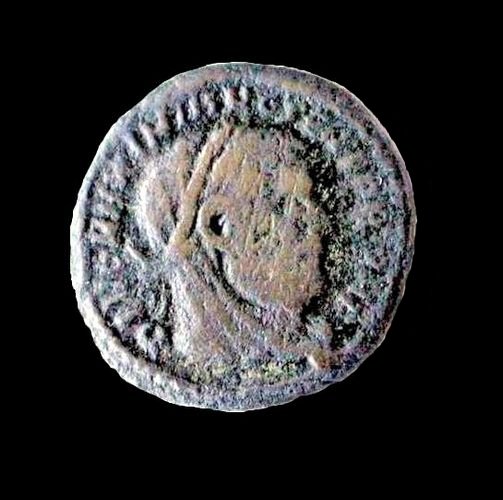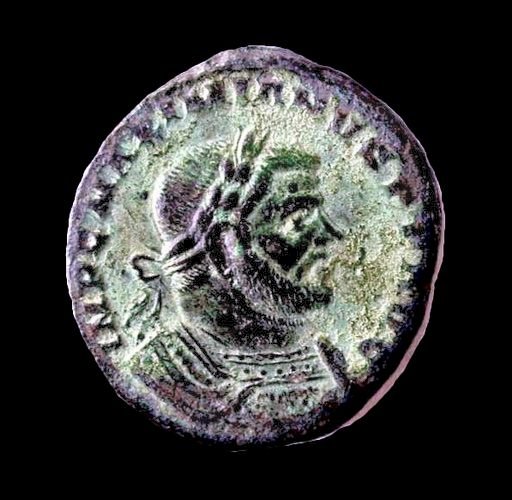

Antoninianus, M. Aurelius Valerius Maximianus Herculius, first reign AD 286 - 305 |
| |
|
In AD 285 Diocletian appointed Marcus Aurelius Valerius Maximianus Herculius as his Caesar. Maximian was proclaimed Augustus the following year. After his suppression of Gaulish rebels and the rebellion of Carausius he campaigned against the Germans along the Rhine until AD 288. During Maximian's fourth consulate (AD 293) the tetrarchy was formed and he became responsible for affairs in Africa, Italy and Spain. In AD 297 Maximian triumphed in Carthage, concluded his campaigns in Iberia and Mauritania the next year. He returned to Italy in AD 299. Maximian celebrated his twentieth anniversary of joint reign in AD 303 and reluctantly abdicated together with Diocletian two years later. After the rebellion of his son Maxentius, Maximian joined his son as co-emperor in AD 307. He defeated Galerius at Rome, however, failed to assume sole power in Italy and fled to Constantine in Gaul, where he abdicated the following year. In AD 310 he distanced him from Constantine and assumed power, only to surrender after a brief reign. Maximian committed suicide in AD 311.As shown above, Maximian's coinage frequently features Hercules as a reverse type - an allusion to the Herculean house of Maximian established when, as junior Augustus, Maximian assumed the heroic role of a Hercules completing various imperial tasks assigned to him. Obv. Maximian, radiate, cuirassed bust right.Rev. Hercules strangling the Nemean lion, VIRTVTI AVGG. Pre-reform coinage. |
AE4, Maximian Herculius, AD 286 - 305; 306 - 308; 310 |
 |
 |
Obv. Maximian, laureate and veiled head right, DIVO MAXIMIANO SEN. FORT. IMP. Rev. An eagle standing head turned right, wings spread, MEMORIAE AETERNAE, in ex. RS. This AE4 commemorative coin (c.16 mm) was struck under Constantine the Great in AD 317-318. The eagle was not only a common symbol of the city of Rome, but it was also the minister of Jupiter's thunder bolts, a major symbol of power. Later it became an important figure in consecration ceremonies where it was released from the summit of a funeral pyre, symbolizing the dead person's soul being carried up to heaven and becoming a god. |
Follis, Maximian Herculius, AD 286 - 305; 306 - 308; 310 |
 |
Obv. Maximian, laureate head right, cuirassed, imperial mantle. IMP. C. MAXIMIANVS. P. P. AVG. Rev. Worn beyond recognition, not displayed. |
| Republican | Imperatorial | |
Greek Imperial | Byzantine |